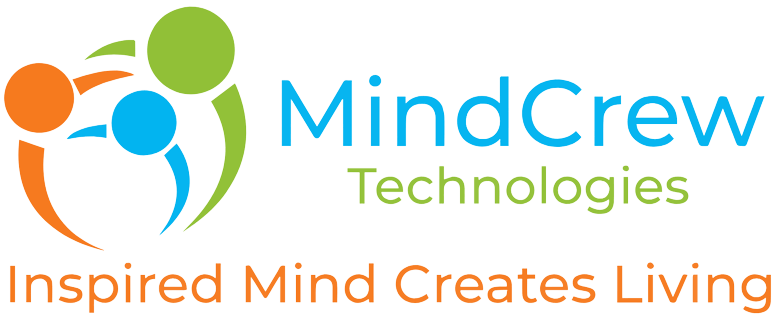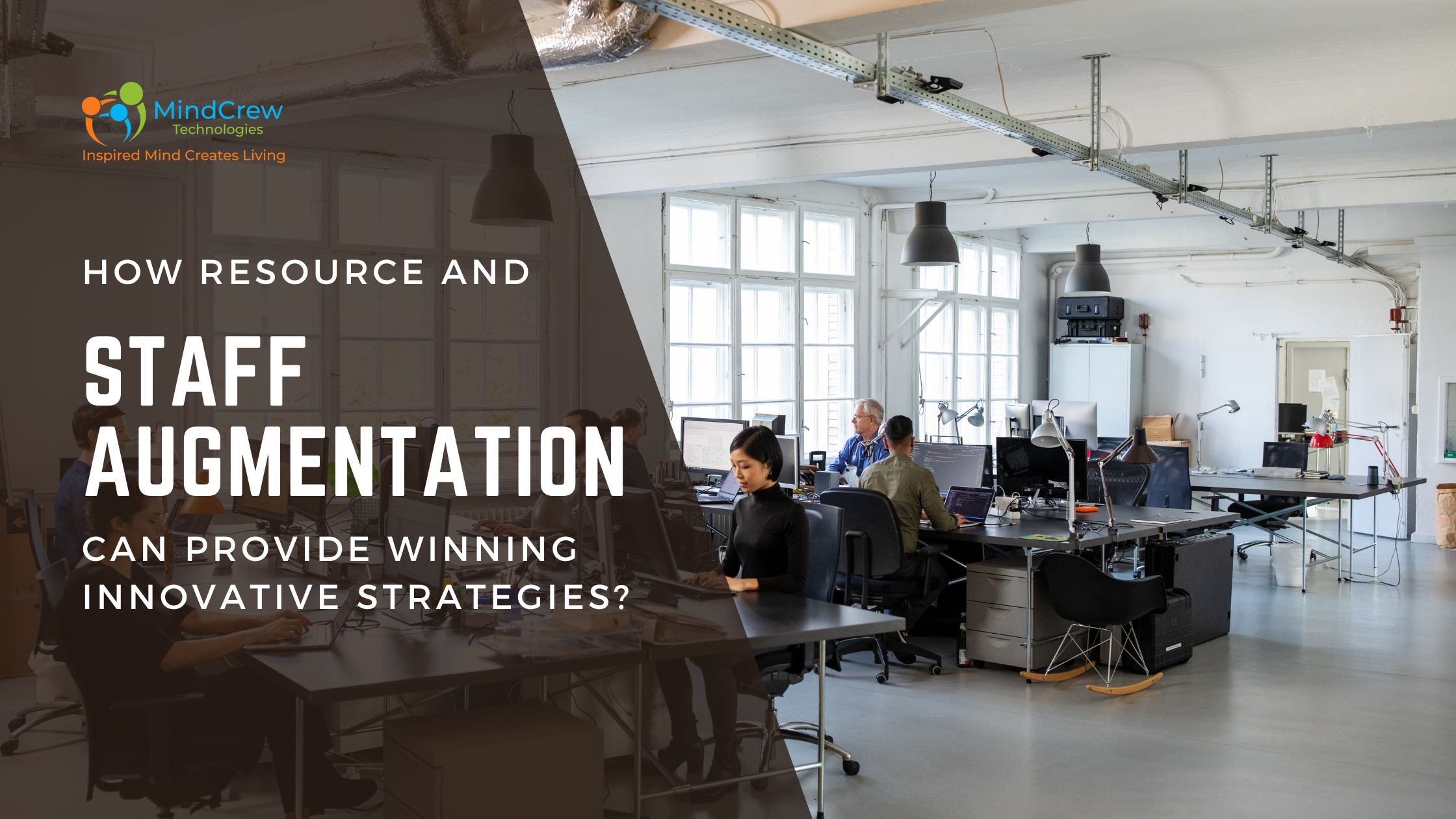How Resource and Staff Augmentation Can Provide Winning Innovative Strategies?
Are you tired of feeling like your business is running on autopilot, lacking the fresh ideas and innovative strategies to propel it forward? Well, look no further! In today’s fast-paced world, resource and staff augmentation have emerged as game-changing solutions for businesses seeking a competitive edge. Whether you’re a small start-up or an established corporation, this blog post will delve into how these dynamic approaches can unlock the untapped potential within your organization. Get ready to revolutionize your business and embrace winning innovative strategies that will set you apart from the competition!
Introduction to Resource and Staff Augmentation
Resource and staff augmentation is a strategy that has gained popularity in recent years, as businesses strive to stay competitive in an ever-changing market. This approach involves outsourcing specific tasks or projects to external resources or hiring temporary staff members when needed. It allows companies to access additional expertise and resources without the long-term commitment of hiring full-time employees.
Resource and staff augmentation can be used for various purposes, such as filling skill gaps, reducing costs, increasing efficiency, and promoting innovation. By leveraging external resources or hiring temporary staff, businesses can focus on their core competencies while also taking advantage of specialized skills and knowledge from outside sources.
One of the main benefits of resource and staff augmentation is its flexibility. Companies can easily scale up or down their workforce according to their changing needs without incurring any additional costs associated with recruitment, training, or employee benefits. This makes it an ideal solution for businesses that experience seasonal fluctuations in demand or have short-term projects that require specialized skills.
Moreover, resource and staff augmentation offer a cost-effective alternative to traditional hiring methods. By outsourcing certain tasks or projects to external teams or hiring temporary workers instead of full-time employees, companies can save on expenses like salaries, healthcare benefits, paid time off, etc. This allows them to allocate their budget towards other areas of the business that may need more attention.
Understanding the Importance of Innovative Strategies in Business
In today’s fast-paced and ever-changing business landscape, it is crucial for companies to constantly adapt and innovate in order to stay competitive. This is where the importance of innovative strategies comes into play. Innovative strategies refer to new and creative approaches that businesses use to improve their products, services, processes, or overall operations.
One of the main reasons why innovative strategies are important in business is because they allow companies to differentiate themselves from their competitors. In a highly saturated market, having a unique approach or offering can be the key factor that sets a company apart and attracts customers. By continuously implementing new and innovative ideas, businesses can stay ahead of the curve and maintain a competitive edge.
Innovative strategies also help businesses become more efficient and cost-effective. Through continuous improvement and optimization of processes, resources, and staff capabilities, companies can streamline their operations and reduce unnecessary expenses. This not only leads to increased profitability but also allows businesses to invest in further innovation.
Moreover, embracing innovative strategies can lead to improved customer satisfaction. By constantly adapting and innovating based on customer feedback and changing preferences, businesses can better meet the needs of their target audience. This not only helps retain existing customers but also attracts new ones through positive word-of-mouth recommendations.
Another significant benefit of implementing innovative strategies is that it fosters a culture of creativity within an organization. When employees are encouraged to think outside the box and come up with new ideas, they feel more engaged and motivated in their work.
How Resource and Staff Augmentation Can Help Enhance Innovation
Resource and staff augmentation have become essential tools for businesses looking to stay competitive in today’s fast-paced market. These strategies involve outsourcing certain tasks or bringing in external professionals to supplement the existing resources and staff of a company. While resource and staff augmentation may seem like simple solutions, they can actually play a crucial role in enhancing innovation within an organization.
Innovation is the key to success in any industry. It refers to the process of creating new ideas, products, or services that add value to a business and its customers. With constantly evolving technologies and changing customer demands, companies must continuously innovate to meet these demands and stay ahead of their competitors.
One of the main ways resource and staff augmentation can help enhance innovation is by providing access to specialized skills and expertise. Businesses often require specific knowledge or experience that their current employees may not possess. By leveraging resource augmentation, companies can bring in professionals with niche skills who can contribute fresh perspectives and innovative ideas to their projects.
Moreover, augmenting resources also allows companies to tap into a wider pool of talent beyond their local area. With remote work becoming increasingly popular, businesses are no longer limited by geographical constraints when it comes to hiring top talent. This means that companies can now access highly skilled individuals from around the globe who may have unique insights and approaches towards problem-solving.
Benefits of Resource and Staff Augmentation for Businesses
Resource and staff augmentation has become a popular strategy for businesses looking to stay competitive in today’s fast-paced market. This approach involves partnering with external agencies or individuals to supplement and enhance the capabilities of a company’s existing resources and staff. It offers numerous benefits that can help businesses achieve their goals and gain a competitive edge. Let’s take a closer look at some of the key benefits of resource and staff augmentation for businesses.
1. Cost Savings:
One of the primary advantages of resource and staff augmentation is cost savings. By outsourcing certain tasks or projects, businesses can save on the costs associated with hiring, training, and retaining full-time employees. They also eliminate expenses such as employee benefits, office space, equipment, and software licenses. With this approach, businesses can access highly skilled resources without incurring unnecessary overhead costs.
2. Flexibility:
Resource and staff augmentation offer businesses flexibility in terms of workforce management. Companies can scale up or down as needed by quickly adding or reducing resources based on project demands. This allows them to respond more effectively to changes in the market or business needs without being tied down by long-term commitments.
3. Access to Specialized Skills:
In today’s rapidly evolving business landscape, it is crucial for companies to have access to specialized skills when required. Resource and staff augmentation provide access to a diverse pool of talented professionals who possess specific expertise that may be lacking within an organization’s current workforce. This enables businesses to complete complex projects efficiently while maintaining high-quality standards.
Steps for Implementing Resource and Staff Augmentation in Your Business
Implementing resource and staff augmentation in your business can be a game-changing strategy that can lead to increased efficiency, productivity, and competitiveness. However, it is essential to have a clear plan and approach in place for successful implementation. In this section, we will discuss the steps you need to take to implement resource and staff augmentation effectively in your business.
Step 1: Identify Your Business Needs
The first step in implementing resource and staff augmentation is to identify your business needs. Take a close look at your current workforce and assess where the gaps are. Are there any specific skill sets or expertise missing? Are some teams overburdened while others have less workload? Identifying these needs will help you determine which areas of your business require additional resources or support.
Step 2: Define Your Objectives
Once you have identified your needs, it is crucial to define your objectives clearly. What do you want to achieve by implementing resource and staff augmentation? Is it to increase production capacity, improve quality, or reduce costs? Having well-defined objectives will help guide you in choosing the right resources and strategies for augmenting your staff.
Step 3: Research Potential Augmentation Partners
The next step is to research potential augmentation partners who can provide the resources or skills needed for your business. It is essential to thoroughly evaluate each partner’s capabilities, experience, track record, and cultural fit with your organization before making a decision.
Challenges and Solutions for Effective Resource and Staff Augmentation
Resource and staff augmentation is an innovative strategy that involves hiring temporary employees or contractors to fill skill gaps or increase capacity in a company. While this approach can offer numerous benefits such as cost savings, flexibility, and access to specialized expertise, it also brings its own set of challenges. In this section, we will discuss the common challenges faced by companies when implementing resource and staff augmentation, as well as potential solutions to overcome them.
1. Finding the Right Fit:
One of the biggest challenges with resource and staff augmentation is finding the right candidate who not only has the required skills but also fits well into the company’s culture. This can be particularly challenging since these employees are not a part of the organization’s regular hiring process. To address this issue, it is crucial to have a thorough understanding of your company’s culture and values before starting the hiring process. Clearly define your expectations and communicate them effectively to potential candidates. Additionally, working with a reputable staffing agency can help streamline the process by providing pre-screened candidates who align with your company’s requirements.
2. Integration into Existing Teams:
When temporary employees or contractors are brought in through resource and staff augmentation, they may face difficulties integrating into existing teams within a short period of time. This can result in communication barriers, conflicts, and ultimately hamper productivity. To avoid this issue, it is important to have clear communication channels and set expectations from both parties from the beginning of their contract period. Providing proper training and ensuring that the temporary employees have access to necessary resources can also help them quickly get up to speed and become a valuable addition to the team.
3. Maintaining Control and Oversight:
Bringing in outside talent through resource and staff augmentation may cause concerns for companies around maintaining control and oversight over their projects. This is because these employees are not directly employed by the company, making it difficult to ensure accountability and monitor their progress. To address this issue, it is important to establish a well-defined project scope, deliverables, and timelines before bringing in any temporary employees. Regular check-ins and status updates from the contracted employees can also help ensure that they are aligned with the company’s goals.
4. Cost Management:
While resource and staff augmentation can offer cost savings compared to hiring full-time employees, it is still essential to manage costs effectively. Companies may face challenges in predicting expenses related to temporary staffing, especially if contracts need to be extended or terminated early due to changing business needs. To overcome this, it is important to establish a clear budget for resource augmentation upfront and continuously monitor expenditures throughout the contract period.
Conclusion: Why Resource and Staff Augmentation is Key to Achieving
In today’s highly competitive business landscape, staying ahead of the game requires constant innovation and strategic planning. This is where resource and staff augmentation can play a crucial role in helping businesses achieve their goals.
Resource and staff augmentation refers to the practice of hiring external resources or personnel on a temporary basis to supplement an organization’s existing workforce. This can range from hiring contractors, consultants, freelancers, or temporary employees for specific projects or tasks.







